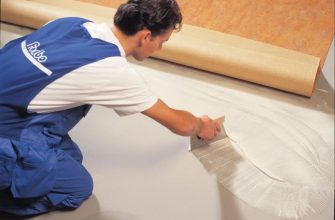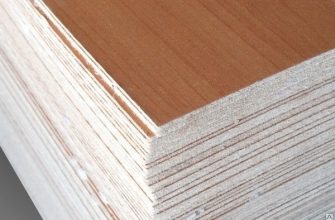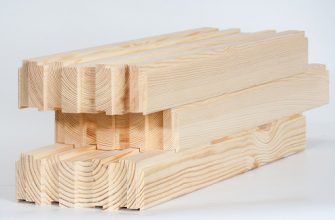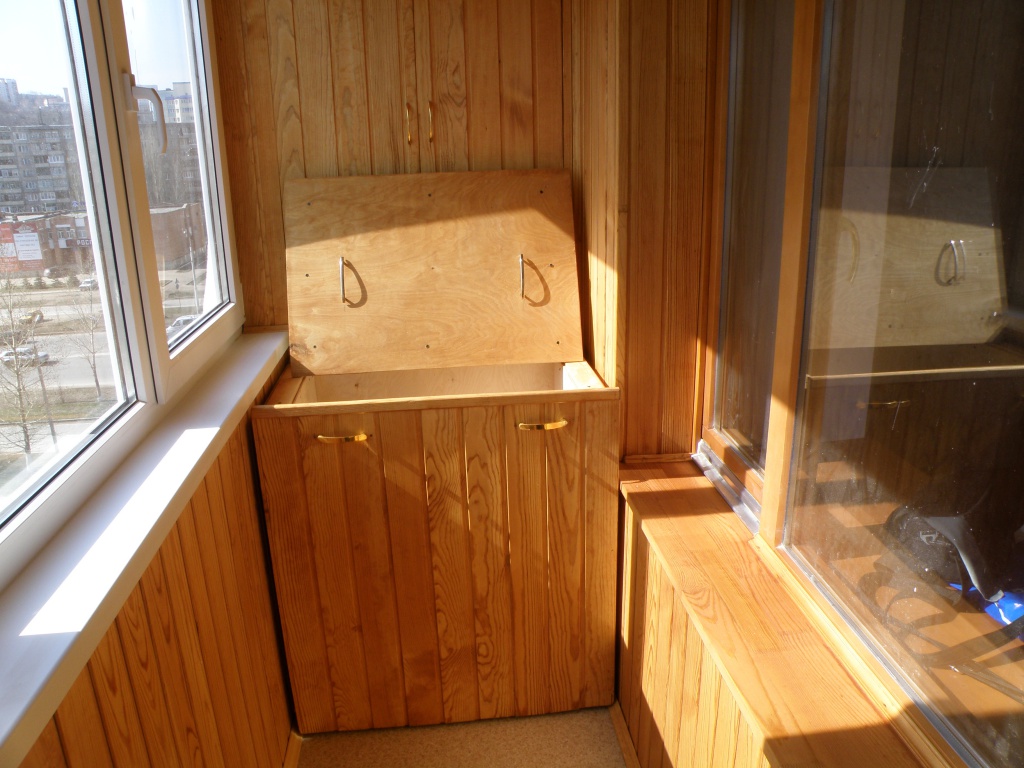An obligatory element of the steam room is the shelves in the bath. You can't take a steam bath while standing; for this, benches are installed on which you can sit or lie. Depending on the size of the room and the number of users, the design of the bench is chosen.
Shelf purpose
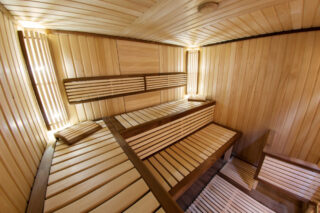
Bath procedures are performed while sitting or lying down. There are several reasons:
- in a standing position, the head heats up much stronger than the body - by 10–20 degrees, which is harmful to health;
- in the prone position, the kidneys will secrete more water, which makes the procedure easier;
- muscle relaxation is a prerequisite for relaxation;
- you can steam with a broom only when the muscles are relaxed, which cannot be achieved in a standing position.
The shelf is a seat with a width of 40 to 90 cm, on which you can sit with bent or outstretched legs, recline, lie with bent or outstretched legs. The preference for this or that position is given taking into account the health and experience of bath procedures.
Design features
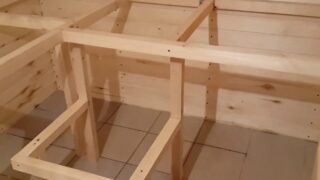
A shelf for a sauna or steam room in a bathhouse made of a log or a log house consists of 2 main elements: a frame and a flooring.
- Frame - support for a stationary or folding seat. The device is simple: the racks and supports are connected with jumpers and the structure is fixed to the wall. You can find an option close to the stair stringer. For a Finnish sauna, they often equip a shelf in the form of a railroad shelf.
- The flooring - the basis for the seat, consists of wooden slats, installed in increments of 1–2 cm. A solid seat cannot be made. The flooring is attached to the frame. The collapsible folding structure is not fixed.
The shelves are complemented with backrests, side rails, bath cushions to ensure maximum comfort.
Recommendations for the choice of material
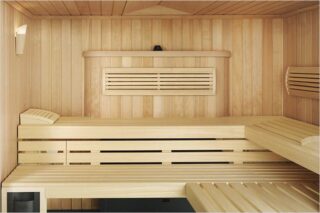
Sauna and steam room benches are made of the same materials as wall, ceiling and floor cladding. Not all breeds are suitable for this. Requirements for it are strict:
- minimum thermal conductivity, otherwise it will not be possible to sit on the bench;
- the wood should not contain a large amount of resinous substances so that the emitted resin does not stain the skin;
- high resistance to water and steam.
In a steam room, the operating conditions are very difficult. At the same time, it is undesirable to protect the tree with paints and varnishes.
The following breeds meet the above requirements:
- Linden is the best idea. She is not afraid of steam, hot water, temperature changes. Does not heat up, remains pleasant to the touch, does not warp or dry out, which is important for shelves. Linden is very easy to process and does not lose its appearance. Plus, the wood smells great.
- Aspen is a strong, hard, durable material. Aspen becomes harder under the influence of water and steam. Needs no maintenance. It is not as beautiful as linden, but just as easily processed. Aspen is prone to rotting fibers in the inner part. Therefore, the boards must be chosen carefully.
- Alder and black alder. The wood does not heat up, does not dry out, is homogeneous and has a smooth surface. Black alder is credited with medicinal properties. It does not change color over time.
- Abashi is an exotic variant, a kind of oak. Its wood is very durable, resistant to water and steam, not subject to decay. Abasha furniture is very beautiful and effective. The minus of wood is darkening at high humidity, so abashi are often taken for finishing the sauna.
- Maple is a durable and light wood, it is not afraid of the highest humidity and does not dry out. Maple is easy to work with, retains attractiveness and is resistant to wear and tear.
- Cedar is the only coniferous species that can be used in a steam room. There are few resinous substances in it. The wood is very beautiful, strong, durable, has a silky smooth surface. Cedarwood releases aromatic substances that stimulate the respiratory system.
For the shelf, as well as for finishing the bath, conifers cannot be used. Such wood is not prone to rotting due to the high content of resinous substances. However, the latter are released at high temperatures and contaminate the surface of the tree.
Construction drawing with dimensions

To make shelves in the bath with their own hands, they begin with the development of a drawing. At this stage, the design of the seat, the size and location of the benches in the room are determined.
- The minimum width of the bench is 40 cm, with a legroom of 60 cm. On such a seat, people sit with their feet on the floor.
- It is more convenient if the width of the shelf is increased to 60 cm, and the width of the footrest is reduced to 40 cm. In this case, the person rests his back against a wall or back, taking a half-sitting position, and stretches his legs.
- You can sit on the bench with your legs bent and pinned. In this case, the seat width reaches 90 cm and there is no stand.
- With a width of 60 cm and a length of 150 cm, you can lie on the bench with your legs bent. This position is preferable.
- The most comfortable benches are up to 185 cm long. Here even a very tall person can lie comfortably with outstretched legs.
It is important to choose convenient dimensions and arrange them correctly. Depending on the size of the room, shelves can be installed along 1, 2 or even 3 walls, on the same level or in several tiers. The latter option is more economical, since it allows more people to steam with the same area.
When creating a drawing, take into account the dimensions of the bench in the sauna and steam room and their design, the distance between the seats:
- the distance from the lowest step to the highest ledge does not exceed 110–120 cm;
- the distance between the 1st and 2nd shelves is 40-60 cm;
- the minimum distance from the shelf to the bottom step is 20 cm;
- the minimum bench length for any width is 150 cm.
The structure can include no more than 3 shelves. Otherwise, the ceiling height exceeds the recommended 2.1 m, which requires more electricity or fuel to heat such a sauna.
What tools will you need to work
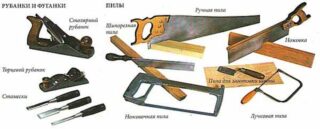
To make shelves you will need:
- wooden beam with a section of 50 * 50 mm for the frame;
- planed boards with a section of 20 * 120 mm for flooring;
- wooden nails and pins for fasteners;
- screws or self-tapping screws for fastening the frame;
- a saw or a hacksaw for wood, a drill for drilling holes for chopiks;
- planer, grinder, sandpaper;
- tape measure, plumb line, pencil.
The wood for the steam room does not need treatment with antiseptic substances. It is allowed to use wax and oil wax for protection.
DIY making
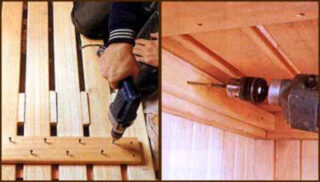
The design of the bench is simple. Following the instructions of the step-by-step guide, it is easy to make shelves with your own hands, even for a beginner.
- Boards for the frame and flooring are cut to size, sanded, and the corners are closed. The lumber is treated with an antiseptic.
- You need to connect wooden parts with a thorn or with wooden nails. Holes with a depth of 20 mm are drilled under them.
- Racks for the frame are made according to the scheme. Most often, the shelves have the form of two steps: they sit on the top, and put their feet on the bottom. Each such rack requires 3 vertical elements and 2 horizontal ones.
- The number of racks is determined by the length of the bench and the shape. If you make an L-shaped structure, you will need a more complex angular one, connecting 2 racks installed at an angle of 90 degrees relative to each other.
- It is recommended to impregnate the racks with an antiseptic after assembly, sand after drying, and then again coat with impregnation.
- The racks are fixed to the wall. It is allowed to use self-tapping screws here. To prevent the timber from rotting at the junction with the wall, short wooden bars are preliminarily fixed to the wall in these areas, and racks are already attached to them.
- Racks are made in the workshop. They assemble the frame for the shelf right in the bath. They are connected with each other with wooden crossbars. If necessary, the structure is reinforced with jibs.
- Plank seats are laid. The slats are placed with a gap of 1–2 cm. They are fastened with wooden nails.
- In the sauna, not only the seat is closed up, but also the space between the steps. Here the slats are placed with a large gap. It is not recommended to do this in the steam room, as moisture accumulates under the closed bench.
You can make the seat more comfortable by installing a backrest. To do this, a short beam is vertically attached to the wall with a step of 40-60 cm and the slats are fixed on them with a gap of 1-2 cm. The boards can be placed on the seat both along and across the bench. On the back - only along the wall.
Handrails and wooden pillows can also be made.
Care during operation
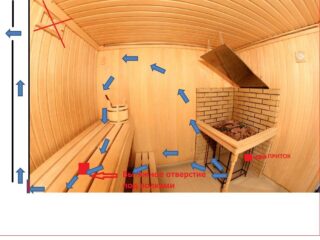
The shelf maintenance is carried out during the bath maintenance.
- Garbage, leaves from a broom, excess moisture are removed from the floor and shelf. Take out all containers with water.
- At the end of the procedure, the room is ventilated for 4–5 hours to completely get rid of moisture. The sauna is ventilated to reduce the temperature.
- In winter, it is recommended to heat the bathhouse for another 1-2 hours, and only then ventilate it.
- Do not leave towels and bathrobes to dry in the steam room.
- It is allowed to use for finishing acrylic varnishes marked "for a steam room", impregnation, wax.
- To restore the color of the darkened wood, it is treated with bleach.
The sauna bench is the most important part of the steam room or sauna. It is not difficult to make it, it is easy to take care of it. She does not need to decorate the shelves.

